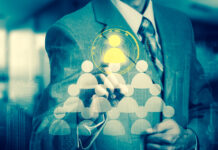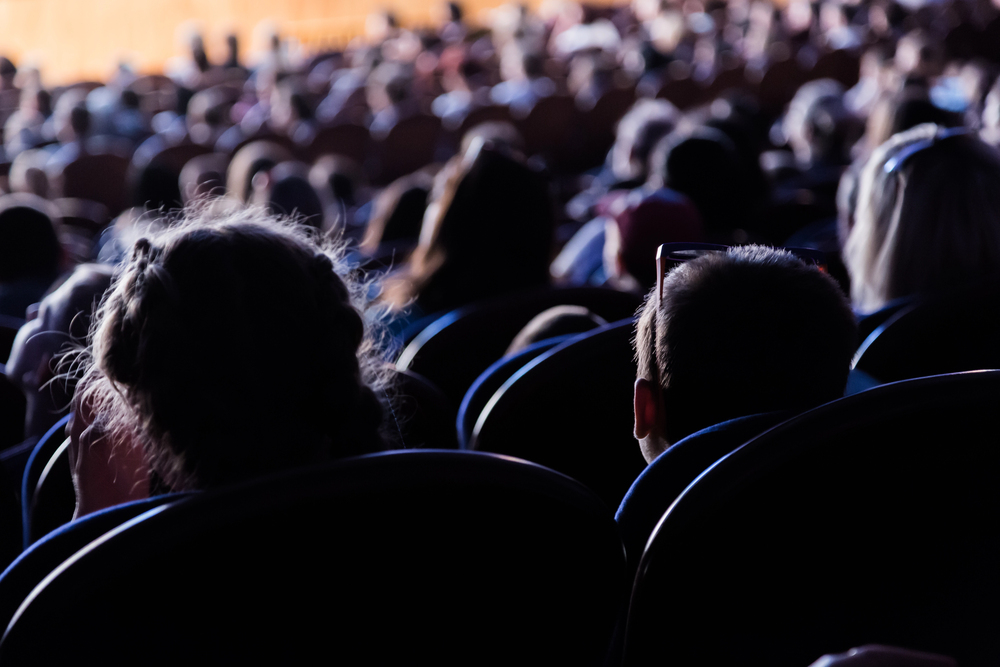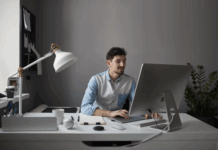Invention ideas have always sparked innovation — from school science fairs to global technology labs. For students, inventing is more than just a project; it’s a hands-on way to learn problem-solving, design, and creativity.
What Are Invention Ideas for Students?
Invention ideas for students are creative problem-solving projects that help young learners apply science, technology, engineering, and mathematics (STEM) concepts to real-world challenges. These projects range from simple classroom experiments to advanced prototypes suitable for science fairs, invention competitions, and school innovation showcases.
Student inventions transform abstract classroom learning into tangible creations. Whether building a balloon-powered car to demonstrate Newton’s Laws or programming a smart plant watering system using Arduino, each project strengthens critical thinking, creativity, and hands-on engineering skills.
In 2026, young innovators worldwide are addressing climate change, accessibility challenges, and technology integration through their inventions. This comprehensive guide presents 80+ invention ideas specifically designed for elementary, middle school, and high school students, organized by difficulty level and STEM focus area.
Why Student Invention Projects Matter

Building Essential Skills for the Future
Student invention projects develop competencies that extend far beyond science class. Young inventors cultivate problem-solving abilities by identifying challenges, researching solutions, and iterating through failures. These experiences mirror real-world engineering processes used by professional innovators at companies like NASA, Apple, and Tesla.
Critical thinking development: Students analyze problems from multiple angles, evaluate trade-offs, and make evidence-based decisions about design choices.
STEM comprehension: Abstract physics concepts like force, energy conversion, and electrical circuits become concrete when students build working prototypes.
Creativity and innovation: Open-ended invention challenges encourage unconventional thinking and reward novel approaches to familiar problems.
Collaboration skills: Group invention projects teach teamwork, communication, conflict resolution, and shared responsibility for outcomes.
Resilience and persistence: Failed prototypes become learning opportunities rather than discouragements, building growth mindsets essential for lifelong learning.
Academic and Career Advantages
Students who participate in invention competitions gain measurable advantages in college admissions and career preparation. Universities increasingly value demonstrated innovation through science fairs, patent applications, and entrepreneurship competitions.
Scholarship opportunities: Organizations like the National Inventors Hall of Fame, Broadcom MASTERS, and Regeneron Science Talent Search award millions in scholarships to young inventors annually.
College application differentiation: Invention projects provide compelling evidence of intellectual curiosity, initiative, and sustained commitment to complex challenges.
Career exploration: Hands-on projects help students discover passions for engineering, medicine, environmental science, computer programming, or industrial design before choosing college majors.
Competition recognition: Awards from Invention Convention Worldwide, FIRST Robotics, Science Olympiad, and Google Science Fair strengthen academic profiles substantially.
Entrepreneurial foundations: Students learn business concepts like intellectual property, market research, prototyping, and pitching ideas—skills valuable in any career path.
How Students Can Develop Invention Ideas: Step-by-Step Guide
Step 1: Observe Problems in Your Daily Environment
Great student inventions begin with curiosity about everyday frustrations. Young inventors should cultivate observational habits by questioning why things work certain ways and imagining improvements.
School environment observations: Uncomfortable desk chairs, heavy backpacks causing back pain, noisy cafeterias, inefficient hallway traffic flow, wasted paper in classrooms.
Home life challenges: Tangled headphone cords, forgotten homework assignments, plants dying from irregular watering, difficulty waking up for school, cluttered bedrooms.
Community issues: Playground accessibility for disabled children, bike theft at parks, littered public spaces, unsafe crosswalks, limited recycling infrastructure.
Environmental concerns: Single-use plastic waste, water consumption in school bathrooms, energy waste from lights left on, food waste in cafeterias.
Keep an “inventor’s notebook” documenting these observations with sketches, photos, and written descriptions. Many famous inventors maintained similar journals throughout their careers.
Before diving into any invention process, it’s important to have a solid foundation for your academic success. If you’re preparing a personal statement for college applications or internships, consider working with a professional to make sure your submission stands out. Hire a personal statement writer for application success to ensure your ideas, achievements, and aspirations are presented in the best possible way.
Step 2: Research What Already Exists
Before investing time building prototypes, students should investigate whether similar inventions exist. This research prevents duplicating existing solutions and reveals opportunities for improvement.
Patent databases: Search kid-friendly patent resources and Google Patents using simple keywords related to your idea.
Science fair archives: Review past winners from Invention Convention, Science Olympiad, and school district competitions.
Product searches: Check Amazon, Target, and toy stores for commercial products addressing similar problems.
Academic research: Ask teachers or librarians to help search educational databases for related experiments and studies.
YouTube and maker communities: Watch DIY project videos on channels focused on student inventions and STEM education.
Understanding existing solutions helps students identify gaps, improve upon weaknesses, or combine features from multiple inventions into novel designs.
Step 3: Brainstorm Multiple Solution Approaches
Using AI Tools to Support Brainstorming (Parent Guidance)
Some students now use AI tools and large language models to help with early idea generation. Parents can guide children to use these tools responsibly. AI should support thinking, not replace creativity or hands-on work.
AI tools can help students:
• List everyday problems worth solving
• Explore multiple solution ideas
• Improve how they explain their invention to teachers or judges
Encourage your child to always build, test, and improve their own invention rather than copying AI-generated ideas.
Effective brainstorming generates quantity before quality. Students should create many possible solutions without judging ideas prematurely.
Mind mapping technique: Write the problem in the center of paper, then branch out with related concepts, causes, and potential solutions. Connect related ideas with lines to visualize relationships.
SCAMPER method: Systematically modify existing ideas by asking: Can I Substitute materials? Combine features? Adapt from other contexts? Modify sizes? Put to other uses? Eliminate components? Reverse processes?
Biomimicry inspiration: Study how nature solves similar problems. Velcro was invented by observing burr seeds sticking to dog fur. Bullet train noses copied kingfisher beak shapes for reduced air resistance.
Sketch rapidly: Draw 20+ quick concept sketches in 30 minutes without erasing. Visual thinking often reveals possibilities that writing alone misses.
Group brainstorming: Work with classmates, friends, or family members. Different perspectives spark unexpected connections and creative combinations.
Select the most promising 2-3 concepts based on feasibility, impact, and personal interest before moving to prototyping.
Step 4: Build Your First Prototype with Available Materials
Student inventors should start with simple, low-cost prototypes that test core concepts rather than perfecting aesthetics or details.
Recycled household materials: Cardboard boxes, plastic bottles, aluminum cans, old electronics, fabric scraps, packaging materials provide endless building supplies.
Craft supplies: Hot glue guns, tape, scissors, markers, popsicle sticks, straws, rubber bands, paper clips enable quick assembly and modifications.
Electronics kits: Arduino starter kits ($20-40), Raspberry Pi computers ($35-75), breadboards, LED lights, sensors, and motors introduce coding and circuits accessibly.
3D modeling software: Free programs like TinkerCAD, SketchUp Free, and Fusion 360 for Students allow virtual prototyping before physical construction.
Makerspaces and libraries: Many schools and public libraries now offer 3D printers, laser cutters, soldering equipment, and tool libraries for student projects.
Safety first: Always use protective equipment (safety glasses, gloves), work in ventilated areas, and get adult supervision when using heat, sharp tools, or electricity.
Document your building process with photos at each stage. This documentation helps when writing science fair reports, creating project videos, or applying for patents later.
Step 5: Test Your Invention and Gather Feedback
Real-world testing reveals problems that aren’t apparent during design. Students should create structured testing protocols to evaluate performance objectively.
Functional testing: Does the invention solve the intended problem? Measure specific outcomes: How much water does it save? How fast does it move? How bright is the light?
Durability testing: Will it withstand repeated use? Test components under stress: Drop it from heights, expose it to water, use it 50+ times consecutively.
User testing: Ask classmates, family members, or target users to try your invention without instructions. Observe where they struggle or get confused.
Comparison testing: How does your invention compare to existing solutions? Create side-by-side tests measuring efficiency, cost, ease of use, and environmental impact.
Data collection: Record quantitative measurements (timings, distances, weights) and qualitative feedback (survey responses, observations, quotes from users).
Analyze feedback honestly. Professional inventors typically build 10-100+ iterations before finalizing designs. Failure teaches more than success—embrace mistakes as valuable learning experiences.
Step 6: Improve Through Iteration
Based on testing results, students should identify specific weaknesses and systematically improve their inventions through redesign cycles.
Prioritize changes: List problems from most critical to least important. Fix major functionality issues before aesthetic improvements.
Change one variable at a time: When testing modifications, alter only one element per iteration so you can identify which change caused improvement or decline.
Seek expert advice: Consult teachers, parents with relevant expertise, local engineers, or online maker communities for technical guidance.
Cost optimization: Can you achieve the same function with cheaper materials? Affordability increases real-world feasibility.
Sustainability considerations: Can you reduce material waste, use renewable resources, or design for easier recycling?
Keep version numbers (Prototype 1, Prototype 2, etc.) and maintain notes explaining what changed between versions and why. This process documentation demonstrates scientific method application in project reports.
Step 7: Present Your Invention Effectively
Strong presentation skills help inventions gain recognition in competitions, secure funding, or inspire others to adopt your innovation.
Project displays: Create tri-fold poster boards with clear sections: Problem, Research, Solution, Testing, Results, Conclusions, Future Improvements.
Demonstration videos: Record 2-3 minute videos showing your invention in action, explaining the problem it solves, and demonstrating real-world testing.
Elevator pitch: Prepare a 60-second verbal summary answering: What problem exists? How does your invention solve it? Why is your solution better than alternatives?
Technical documentation: Maintain detailed inventor’s notebooks with dated entries, sketches, calculations, and observations throughout the project timeline.
Visual aids: Use charts, graphs, before/after photos, and comparison tables to make data compelling and easy to understand.
Practice presenting to family and friends before competitions. Prepare answers for common judge questions: How did you think of this idea? What was your biggest challenge? What would you change next time?
80+ Invention Ideas for Students by Category and Grade Level
A. Simple Invention Ideas for Elementary Students (Grades K-5)

These beginner-friendly projects introduce fundamental STEM concepts through hands-on creation suitable for young learners with adult supervision.
1. Balloon-Powered Race Car
Demonstrates Newton’s Third Law of Motion (action-reaction forces) by propelling a wheeled vehicle using escaping air from an inflated balloon. Build chassis from cardboard, attach bottle cap wheels, and secure balloon to straw for directional thrust.
2. Rubber Band Helicopter
Teaches rotational motion and potential energy conversion by winding rubber bands to spin propeller blades. Construct from popsicle sticks, paper clips, and index card rotors.
3. Mini Water Filtration System
Explains water purification processes by layering activated charcoal, sand, gravel, and coffee filters inside cut plastic bottles. Test effectiveness by filtering muddy water and comparing clarity.
4. Paper Circuit Greeting Card
Introduces electrical circuits using copper tape, coin cell batteries, and LED lights to create illuminated cards. Design circuits that light up when cards open using conductive path interruptions.
5. Recycled Bottle Garden Sprinkler
Transforms waste plastic bottles into functional irrigation tools by punching strategic hole patterns. Test different configurations for coverage area and water distribution efficiency.
6. Homemade Magnetic Compass
Demonstrates Earth’s magnetic field by magnetizing sewing needles against permanent magnets, then floating them on cork discs in water dishes. Test accuracy against commercial compasses.
7. Solar Oven from Pizza Box
Harnesses solar energy for cooking by lining box interiors with aluminum foil and creating transparent plastic wrap windows. Measure internal temperatures and test by melting chocolate or making s’mores.
8. Wind-Powered Toy Vehicle
Captures air movement using paper sails or lightweight fans attached to cardboard chassis. Race against classmates to see whose design travels farthest with equal wind exposure.
9. Simple Catapult Launcher
Applies lever principles and elastic potential energy using popsicle sticks, rubber bands, and plastic spoons. Measure projectile distances and angles to understand trajectory physics.
10. Tornado in a Bottle
Visualizes vortex formation by connecting two bottles with duct tape and adding water, glitter, and dish soap. Study rotational fluid dynamics and centripetal force.
11. Egg Drop Protection Capsule
Engineers shock-absorbing structures using straws, bubble wrap, cotton balls, and cardboard. Test from increasing heights until eggs survive drops exceeding 10 feet.
12. Walking Water Experiment Device
Demonstrates capillary action and color mixing by connecting water-filled cups with paper towel bridges. Document time required for water to travel between containers.
13. Static Electricity Butterfly
Creates hovering paper butterflies using static charges from rubbed balloons. Investigate which materials generate strongest static effects (wool, silk, plastic).
14. Homemade Barometer
Builds air pressure measuring devices using glass jars, balloons, straws, and cardboard scales. Track weather pattern correlations with pressure changes over multiple days.
15. Simple Periscope
Constructs viewing devices using cardboard tubes, pocket mirrors, and 45-degree angle brackets. Explain light reflection principles and military/submarine applications.
B. Intermediate Invention Projects for Middle School (Grades 6-8)

These moderately complex projects introduce electronics, programming basics, and multi-component systems requiring sustained effort over several weeks.
16. Arduino-Based Plant Watering System
Automatically irrigates plants by reading soil moisture sensors and activating water pumps when dryness thresholds are exceeded. Program using Arduino IDE with conditional logic statements.
17. Solar-Powered Phone Charging Station
Creates portable charging solutions by connecting solar panels to USB charge controllers and battery storage systems. Calculate optimal panel angles for geographic locations and seasons.
18. Hydraulic Robotic Arm
Demonstrates Pascal’s Law using water-filled syringes connected with plastic tubing to control mechanical joints. Design claws capable of picking up objects weighing 100+ grams.
19. Earthquake-Resistant Building Model
Tests structural engineering principles by constructing buildings with base isolation, dampers, or flexible materials. Shake on vibrating platforms to compare survival rates.
20. Miniature Wind Turbine Generator
Builds functional wind-powered generators lighting LED bulbs using DC motors, PVC pipe frames, and foam board blades. Measure power output at various wind speeds.
21. Smart Doorbell with Motion Detection
Programs Raspberry Pi computers with camera modules and PIR motion sensors to detect visitors and send smartphone notifications via IFTTT integration.
22. Water Rocket with Parachute Recovery
Constructs air-pressure-propelled rockets from soda bottles, achieving heights exceeding 100 feet. Design parachute systems for controlled descent and payload protection.
23. Motorized Conveyor Belt System
Replicates factory automation by building adjustable-speed belts powered by DC motors and controlled by variable resistors or pulse-width modulation circuits.
24. Magnetic Levitation Train Model
Demonstrates maglev principles using opposing neodymium magnets to reduce friction. Build tracks and measure speed advantages compared to wheeled vehicles.
25. DIY Seismograph Device
Detects ground vibrations using suspended masses attached to marking pens recording on rotating paper drums. Test sensitivity to footsteps, door slams, and actual earthquake data.
26. Automatic Pet Feeding System
Dispenses measured food portions at programmed times using servo motors, food hoppers, and Arduino timers. Include sensors detecting low food levels for refill reminders.
27. Robotic Hand with Servo Fingers
Creates articulated hands controlled by flex sensors in gloves or joystick inputs. Program grip strength adjustments for handling delicate versus heavy objects.
28. Home Energy Monitor Display
Tracks household electricity consumption in real-time using current sensors on power lines. Display data on LCD screens showing cost calculations and conservation tips.
29. Smart Traffic Light System
Simulates urban traffic management using LEDs, timers, and vehicle detection sensors. Program adaptive timing that adjusts based on traffic volume.
30. Water Quality Testing Device
Measures pH, turbidity, temperature, and dissolved oxygen in local water sources. Compare readings from streams, tap water, and filtered water to assess safety.
C. Advanced Invention Ideas for High School Students (Grades 9-12)
Sophisticated projects incorporating multiple STEM disciplines, suitable for advanced competitions and college application portfolios.
31. AI-Powered Recycling Sorter
Uses computer vision and machine learning (TensorFlow, Python) to identify and categorize recyclable materials. Train models to distinguish plastic types, metals, and paper products.
32. Drone-Based Forest Fire Detection System
Develops autonomous aerial surveillance using thermal imaging cameras and GPS waypoint navigation. Program automatic alert transmission when temperature anomalies are detected.
33. 3D-Printed Prosthetic Hand
Designs affordable assistive devices using CAD software and additive manufacturing. Incorporate force-sensing resistors for grip feedback and battery-powered actuation.
34. Blockchain-Based Student Record System
Creates immutable academic transcript storage using distributed ledger technology. Explore cryptographic hashing, consensus mechanisms, and privacy considerations.
35. Biofuel Production from Algae
Cultivates microalgae strains and extracts lipids for biodiesel conversion. Analyze energy return on investment and compare efficiency to traditional petroleum processes.
36. Smart Wheelchair Navigation System
Integrates ultrasonic sensors, GPS modules, and voice commands for assisted mobility. Program obstacle detection algorithms preventing collisions and mapping accessible routes.
37. Neural Network Music Composition
Trains recurrent neural networks on musical datasets to generate original compositions. Experiment with different genres, instruments, and style transfer techniques.
38. Solar Desalination System
Purifies saltwater using concentrated solar thermal energy and distillation processes. Measure output volume, energy efficiency, and salt removal effectiveness.
39. Augmented Reality Chemistry Lab
Creates interactive molecular visualization apps using ARKit/ARCore. Allow users to manipulate 3D molecular structures and observe chemical reactions in mixed reality.
40. Microbial Fuel Cell Power Bank
Generates electricity from soil bacteria metabolizing organic matter. Experiment with electrode materials, bacterial species, and substrate compositions for optimal voltage.
41. Gesture-Controlled Robotic Arm
Interprets hand movements using accelerometers and gyroscopes in wearable devices. Implement inverse kinematics algorithms for precise spatial positioning.
42. Smart Aquaponics Ecosystem
Integrates fish farming with hydroponic plant growth, monitoring pH, ammonia levels, temperature, and nutrient concentrations automatically. Program feeding schedules and environmental controls.
43. Low-Cost Earthquake Early Warning
Detects primary seismic waves using accelerometers and provides seconds-to-minutes advance warning before destructive secondary waves arrive. Network multiple sensors for improved accuracy.
44. Exoskeleton Strength Enhancement
Builds wearable robotic frameworks using pneumatic actuators or electric motors to augment human lifting capacity. Study ergonomics, power efficiency, and safety mechanisms.
45. Quantum Random Number Generator
Exploits quantum mechanical uncertainty using photon polarization or radioactive decay for true randomness. Compare to pseudo-random computer algorithms in cryptographic applications.
D. Eco-Friendly and Sustainability Student Inventions
Projects addressing environmental challenges through renewable energy, waste reduction, and conservation technology.
46. Rainwater Harvesting and Filtration
Collects roof runoff in storage barrels, filters through multi-stage systems, and distributes for garden irrigation. Calculate annual water savings and payback periods.
47. Plastic Waste Recycling Machine
Shreds, melts, and extrudes plastic waste into filament for 3D printing or construction bricks. Test mechanical properties of recycled versus virgin plastics.
48. Bicycle-Powered Generator Station
Converts pedaling energy into electricity stored in batteries for charging devices or powering lights. Measure watts generated per hour and compare to solar panels.
49. Vertical Garden Tower System
Maximizes food production in limited spaces using stacked hydroponic or aeroponic growing chambers. Monitor crop yields compared to traditional horizontal gardens.
50. Compost Temperature Monitoring
Tracks decomposition progress using waterproof temperature probes and data logging. Correlate heat generation with turning frequency and material ratios.
51. Solar Water Distillation Unit
Purifies contaminated water using greenhouse effect evaporation and condensation collection. Test effectiveness against bacteria, heavy metals, and dissolved salts.
52. Wind-Powered Water Pump
Lifts groundwater for irrigation without electricity using traditional windmill mechanics. Calculate pumping capacity at various wind speeds and depths.
53. Eco-Brick Building Blocks
Fills plastic bottles densely with non-recyclable waste to create construction materials. Test compressive strength and thermal insulation properties.
54. Algae Bioreactor for CO2 Absorption
Cultivates photosynthetic microorganisms in transparent tubes to sequester carbon dioxide. Measure absorption rates and algae biomass production.
55. Energy-Generating Sidewalk Tiles
Harnesses pedestrian footsteps using piezoelectric materials or mechanical generators beneath pavement. Calculate power output from typical foot traffic patterns.
56. Smart Irrigation System with Weather API
Cancels scheduled watering automatically when rain is forecasted by accessing online weather data. Track water conservation compared to timer-only systems.
57. Upcycled Bottle Greenhouse
Constructs temperature-controlled growing environments from plastic bottle walls providing insulation. Measure internal temperature stability and plant growth rates.
58. Methane Capture from Organic Waste
Digests food scraps in sealed containers, collecting biogas for cooking or heating. Study anaerobic bacterial processes and gas composition analysis.
59. Solar Panel Sun Tracking System
Increases energy collection by automatically rotating panels toward optimal angles using light sensors and servo motors. Compare output to fixed-position panels.
60. Water-Saving Faucet Aerator
Reduces consumption by mixing air with water streams while maintaining pressure. Test various designs measuring flow rates and user satisfaction.
E. Health and Safety Invention Projects
Student innovations improving wellbeing, accessibility, and emergency preparedness.
61. Posture Correction Alert Device
Monitors spine alignment using accelerometers, vibrating when prolonged slouching is detected. Study effectiveness in reducing back pain among students.
62. UV Sanitizing Phone Case
Disinfects smartphones using germicidal ultraviolet-C LEDs while charging. Test bacterial reduction rates with agar plate cultures before and after treatment.
63. Smart Medication Reminder System
Helps elderly or forgetful patients by dispensing pills on schedule with audio/visual alerts. Include sensors detecting when medications are removed.
64. Bicycle Helmet with Impact Sensors
Detects crashes using accelerometers and automatically sends emergency contact notifications with GPS coordinates via Bluetooth smartphone connections.
65. Portable Hand Sanitizer Dispenser
Mounts touchless alcohol gel dispensers on backpacks or wheelchairs using motion sensors and rechargeable batteries for convenient hygiene access.
66. Sleep Quality Monitoring Mat
Analyzes rest patterns using pressure sensors and heart rate detection without wearable devices. Generate reports correlating sleep quality with daily activities.
67. Air Quality Warning System
Measures particulate matter, carbon dioxide, and volatile organic compounds in classrooms. Alert occupants when ventilation is needed for health.
68. Smart Cane for Visually Impaired
Enhances mobility with ultrasonic obstacle detection, vibrating handle warnings, and GPS navigation assistance via audio instructions.
69. Hydration Reminder Water Bottle
Tracks daily water intake and glows or beeps at intervals encouraging adequate hydration. Sync data to smartphones showing consumption patterns.
70. Emergency Disaster Communication
Creates mesh networks using LoRa radio modules for text messaging when cellular infrastructure fails during natural disasters or emergencies.
F. Creative and Artistic STEM Inventions
Projects blending science with arts, music, and visual design for well-rounded innovators.
71. Laser Light Show Programmer
Controls RGB laser projectors synchronized to music using audio frequency analysis and Arduino coordination. Create custom light patterns matching song rhythms.
72. 3D Hologram Projection Display
Produces floating three-dimensional images using transparent pyramid prisms and smartphone screens. Optimize viewing angles and image clarity.
73. Musical Stairs with Step Sensors
Transforms staircases into playable instruments by triggering different notes when pressure plates detect footsteps. Program various scales and sound effects.
74. Kinetic Sculpture with Motor Control
Builds moving art installations using synchronized servos, stepper motors, and programmed choreography. Explore mechanical motion as artistic expression.
75. LED Cube Display Matrix
Constructs three-dimensional arrays of lights creating volumetric animations. Program patterns using persistence of vision effects and layered control.
76. Voice-Modulation Sound Effects Processor
Alters audio in real-time using digital signal processing algorithms for pitch shifting, reverb, echo, and robotic effects. Build guitar pedal equivalents.
77. Interactive Museum Exhibit Model
Designs engaging educational displays with touchscreens, motion sensors, and augmented reality components. Test visitor engagement and learning retention.
78. Stop-Motion Animation Studio
Creates professional filmmaking setups with adjustable lighting, camera mounting, and frame-by-frame capture software. Produce short claymation videos.
79. Mathematical Fractal Generator Art
Programs algorithms creating self-similar patterns like Mandelbrot sets, Julia sets, or Sierpinski triangles. Print high-resolution images exploring mathematical beauty.
80. Theremin Electronic Musical Instrument
Builds touchless instruments controlled by hand proximity to antennas through capacitance changes. Study oscillator circuits and audio synthesis principles.
Competitions and Showcasing Opportunities for Young Inventors
National and International Invention Competitions
Invention Convention Worldwide
Global network of local, state, and national invention competitions for K-12 students. Winners receive scholarships, patent application assistance, and mentorship from professional engineers. Visit inventionconvention.org for affiliate programs in your region.
Broadcom MASTERS (Math, Applied Science, Technology and Engineering for Rising Stars)
Middle school science and engineering competition sponsored by Society for Science selecting top 30 finalists from regional fairs. Prizes include $25,000 scholarships and STEM experiences at national laboratories.
Regeneron Science Talent Search
America’s oldest pre-college STEM competition for high school seniors conducting original research. Top 40 finalists compete in Washington D.C. for $2 million in awards, with the winner receiving $250,000.
FIRST Robotics Competition (FRC) and FIRST LEGO League (FLL)
Team-based robotics challenges combining mechanical design, programming, and strategic gameplay. Builds collaboration skills while solving annual engineering problems with corporate mentorship.
Google Science Fair
International online competition for ages 13-18 encouraging innovative solutions to global challenges. Winners receive scholarships, internship opportunities at Google, and trips to LEGO headquarters or Virgin Galactic.
National STEM League Invention Competition
Virtual competition allowing students to submit video presentations of their inventions. Categories include sustainability, accessibility, health innovations, and creative problem-solving.
Local and School-Based Opportunities
School Science Fairs: Begin with classroom or school-level competitions to refine presentation skills and receive teacher feedback before advancing to district and regional events.
Maker Faire: Community celebrations of DIY culture and hands-on creativity hosted in cities worldwide. Students demonstrate projects to thousands of attendees, connecting with fellow makers and potential mentors.
Science Olympiad: Academic competition featuring 23 STEM events per tournament, including several invention-focused challenges like Wright Stuff (aeronautics), Mission Possible (Rube Goldberg machines), and Protein Modelling.
Technology Student Association (TSA): A Career and technical student organization hosting conferences with invention and design competitions in categories like biotechnology, engineering, and problem-solving.
4-H STEM Programs: Youth development organisation offering project-based learning opportunities, including invention challenges, robotics clubs, and environmental science investigations through county extension offices.
Online Platforms for Sharing Student Inventions
YouTube and TikTok: Create demonstration videos explaining problems solved, building processes, and testing results. Use hashtags like #STEMeducation, #YoungInventor, and #ScienceFair to reach broader audiences.
Instructables: Document step-by-step building instructions with photos for each stage. Popular student projects receive homepage features and can win monthly contest prizes.
Hackaday.io: A Technical project documentation platform where students connect with professional engineers, offering feedback and design improvement suggestions.
Science Buddies: Nonprofit resource providing project ideas, procedures, and mentorship matching students with STEM professionals for guidance during invention development.
Reddit Communities: Share projects in subreddits like r/DIY, r/Arduino, r/AskScience, and r/Engineering, seeking constructive criticism and celebration from supportive online communities.
Resources and Tools for Student Inventors
Free Educational Software and Platforms
TinkerCAD: Browser-based 3D modeling software with built-in electronics simulation for designing circuits and prototypes before physical construction. Completely free with Autodesk account.
Scratch: A Visual programming language developed by MIT to teach coding fundamentals through drag-and-drop blocks. Create games, animations, and control hardware like micro: bit and Makey Makey boards.
Arduino IDE: Open-source software for programming Arduino microcontrollers. Massive online community provides thousands of free project tutorials and code libraries.
Fusion 360 for Students: Professional-grade CAD software with parametric modeling, simulation, and CAM capabilities. Free educational licenses for secondary and higher education students.
Python: A Versatile programming language essential for data science, machine learning, web development, and hardware control. Learn through free resources like Code.org, Codecademy, and Real Python tutorials.
Khan Academy STEM Courses: Comprehensive video lessons covering mathematics, physics, chemistry, biology, and computer science. Progress tracking and practice exercises reinforce concepts.
Affordable Hardware and Component Sources
Arduino Starter Kits ($20-40): Include microcontroller boards, sensors, LEDs, resistors, breadboards, and jumper wires for building hundreds of electronic projects.
Raspberry Pi ($35-75): Credit-card-sized computers running Linux operating systems. Powerful enough for computer vision, web servers, game consoles, and robotics applications.
AdaFruit and SparkFun: Educational electronics retailers offering components, tutorials, and learning guides specifically designed for beginners and students.
Amazon Basics Electronics: Budget-friendly jumper wires, resistor assortments, LED kits, and multimeters providing essential supplies for experimentation.
Local Recycling Centers: Free sources of motors, gears, circuit boards, and mechanical components from discarded electronics like printers, toys, and appliances.
Dollar Stores and Thrift Shops: Inexpensive craft supplies, household items, and toys to repurpose into invention materials.
Maker Spaces and Community Resources
School STEM Labs: Many schools now maintain dedicated maker spaces with 3D printers, laser cutters, soldering stations, and hand tools available during and after school hours.
Public Library Maker Spaces: Increasingly common in libraries, offering free access to expensive equipment with training classes for safe operation.
Community College Workshops: Some institutions open fabrication labs to local youth during summer programs or weekend workshops teaching manufacturing skills.
Boys & Girls Clubs and YMCA Programs: Youth organizations frequently host robotics clubs, coding classes, and invention challenges with minimal membership fees.
Engineering Firm Partnerships: Local companies sometimes mentor students, provide facility tours, or donate materials supporting school STEM initiatives.
Final Thoughts: You’ve Got This.
Every great invention starts small — a sketch, a school project, or a curious “what if?” moment. Whether you’re in India, the U.S., or anywhere in the world, these student-friendly invention ideas encourage creativity, sustainability, and smart problem-solving.
“Innovation is not about having the best idea — it’s about making an idea better for everyone.”
If you have an invention idea you’d like to develop further, explore our resources on prototype development, product design, and patent basics at Home Business Magazine.
FAQs:
1. What is the easiest thing to invent?
The easiest inventions solve small, everyday problems using simple materials. Examples include a plant watering system made from a bottle, a basic phone stand, a backpack organizer, or a water-saving device. These projects are ideal for beginners because they focus on function, creativity, and learning rather than technical complexity.
2. What does “prototype” mean?
A prototype is a basic working version of your invention. Think of it like a “rough draft” of your idea — it doesn’t need to be perfect, but it shows how your invention would look or work.
3. What’s the difference between a patent and a copyright?
A patent protects new inventions or products (like a gadget or machine).
Copyright protects creative work (like books, art, or music).
So if you invent something, you’d look at patents, not copyright.
4. Why do people talk about ‘market research’—what does that mean?
Market research is just a way of finding out if people actually want your invention. It can be as simple as asking friends, classmates, or conducting surveys online to see if your idea solves a problem others care about.
5. Do I need a lot of money to start inventing?
Not necessarily. Many inventions start small — you can use recycled materials, 3D printers at school, or even free software. Funding becomes important only if you want to manufacture and sell your product on a larger scale.
Find a Home-Based Business to Start-Up >>> Hundreds of Business Listings.

















































